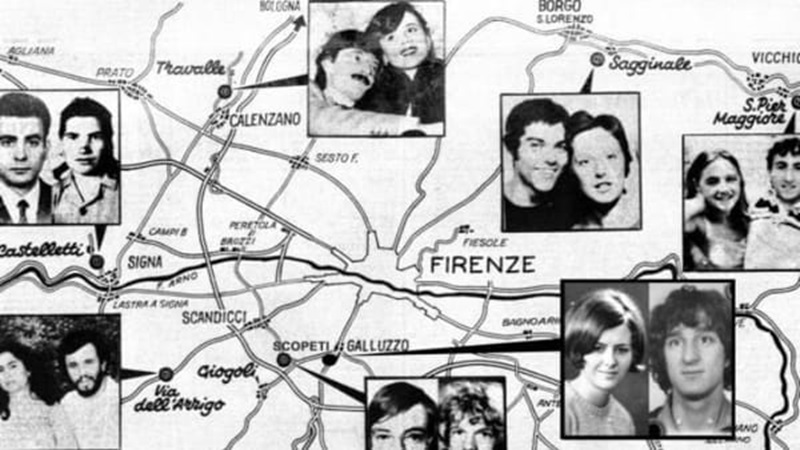On August 21, 1968, Antonino Lo Bianco and Barbara Locci were killed while they were isolated in the countryside, near the cemetery of Signa. Locci's son, Natalino, is in the back seat while the two flirt and is spared. It is traditionally the crime in which the 22-caliber Beretta pistol appears for the first time, with which the Monster of Florence would sign the seven subsequent double murders, from 1974 to 1985. The weapon has never been found. While a bullet found in his garden will be part of the evidence against Pietro Pacciani. Died while awaiting the appeal trial after his acquittal was overturned by the Supreme Court. While Mario Vanni and Giancarlo Lotti were sentenced to life imprisonment and 26 years in prison. Today, the DNA of an unknown person reopens the investigation that lasted twenty years.
DNA
30 years after the Scopeti murder, in which Nadine Mauriot and Jean Michel Kraveichvili lost their lives, a bullet lodged in the cushion of the two boys' tent was found on June 30, 2015. The bullet, named V3, was examined in 2018 by a team led by geneticist Ugo Ricci. The team of doctors identified a recurring profile, mixed with a second unknown profile. Italian hematologist Lorenzo Iovino analyzed the DNA sequences. “The second DNA of the V3 exhibit is not only incompatible with that of the victims and the second ballistics expert who had handled the exhibit, nor even with that of some suspects, nor with the DNA traces of other unknown individuals isolated by Ricci on Jean Michel's pants and on the tent,” Iovino tells the Florentine edition of Repubblica.
The sequence and other crimes
Furthermore, the sequence obtained is also partially found on the bullets of two other double murders. Namely those of Horst Wilhelm Meyer and Jens-Uwe Rüsch (September 9, 1983) and Pia Rontini and Claudio Stefanacci (July 29, 1984). “The killer's DNA could have remained imprinted while he was receiving the bullets,” adds the doctor, who has constantly informed lawyer Vieri Adriani of his studies. “Some crimes (like the first in 1968) were not covered by the authority of res judicata, and the convictions themselves assumed a plurality of actors. For this reason, it would be essential to fully exploit the results of the genetic consultations already carried out.”
An unknown profile
The unknown profile, Iovino explains, emerges by subtraction. And it would be important, the expert explains, to compare it with that of Stefania Pettini, killed in Vicchio on September 14, 1974 with Pasquale Gentilcore. “We know, thanks to the forensic opinions, that he may have fought against the killer. “It is not impossible to think that there are biological samples under her fingernails,” says Iovino. This is why Adriani is preparing to ask the girl's family to exhume the body. “Of course, it is possible that nothing will be found, due to the time that has passed or the state of preservation of the body being too degraded. Or that, even in the event of a positive result, the DNA may be incomplete or not comparable. The fact remains that in unsolved cases we must do everything possible. Comparing myself to the experts in the forensic field, I confirm that repeating the autopsy is highly desirable,” he concludes.

